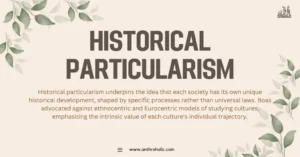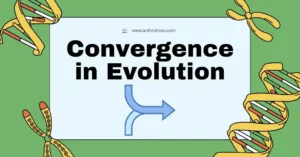AI Answer Evaluation Platform Live Now. Try Free Answer Evaluation Now
Cell
Cells are the fundamental building blocks of all living organisms, a microcosm of life teeming with complex and dynamic processes.

Prokaryotic and Eukaryotic Cells: A Comparative Overview
A. Prokaryotic Cells
Prokaryotic cells, which include bacteria and archaea, are the simplest and most ancient forms of life on Earth. Lacking a nucleus and membrane-bound organelles, prokaryotic cells are generally smaller and less complex than their eukaryotic counterparts.
Characteristics of Prokaryotic Cells
- Simpler, smaller structure
- Absence of nucleus and membrane-bound organelles
- Circular DNA molecule called plasmid
- Divides through binary fission
B. Eukaryotic Cells
Eukaryotic cells, which compose all multicellular organisms and some single-celled organisms, are more complex and larger than prokaryotic cells. They contain a nucleus and a variety of membrane-bound organelles that perform specialized functions.
Characteristics of Eukaryotic Cells
- More complex, larger structure
- Presence of nucleus and membrane-bound organelles
- Linear DNA molecules packed in chromosomes
- Divides through mitosis and meiosis
| Prokaryotic Cells | Eukaryotic Cells | |
|---|---|---|
| Size | Smaller | Larger |
| Nucleus | Absent | Present |
| Organelles | None | Membrane-bound |
| DNA Structure | Circular | Linear |
| Cell Division | Binary Fission | Mitosis, Meiosis |
The Intricate World of Eukaryotic Organelles
- The Nucleus: As the control center of the cell, the nucleus houses the cell’s DNA, which is organized into chromosomes. The nucleus is surrounded by a double membrane called the nuclear envelope, which contains nuclear pores that regulate the passage of molecules in and out of the nucleus.
- Mitochondria: Mitochondria are the powerhouses of the cell, responsible for generating adenosine triphosphate (ATP), the cell’s primary energy currency. These organelles have their own DNA and are believed to have originated from ancient bacteria through a process called endosymbiosis.
- Endoplasmic Reticulum (ER): The endoplasmic reticulum is a network of membranous tubules and sacs involved in the synthesis and folding of proteins (rough ER) and the production of lipids (smooth ER).
- Golgi Apparatus: The Golgi apparatus is responsible for sorting, modifying, and packaging proteins and lipids produced by the endoplasmic reticulum. It functions as the “post office” of the cell, directing the delivery of cellular products to their appropriate destinations.
- Lysosomes: Lysosomes are membrane-bound organelles containing enzymes that break down cellular waste and foreign substances. They play a crucial role in recycling cellular components and maintaining cellular homeostasis.
- Peroxisomes: Peroxisomes are small, membrane-bound organelles involved in lipid metabolism and the breakdown of toxic substances, such as hydrogen peroxide, through oxidation reactions.
- Cytoskeleton: The cytoskeleton is a dynamic network of protein filaments that provides structural support, facilitates cell division, and enables cell movement. It consists of microtubules, microfilaments, and intermediate filaments.
Cellular Communication and Signaling
Cells communicate with one another through a complex system of signaling pathways, involving the release and reception of chemical messengers called ligands. These ligands can be hormones, neurotransmitters, or growth factors, among others. Cellular communication is essential for coordinating cellular activities and ensuring proper functioning of multicellular organisms.
A. Types of Cell Signaling
- Autocrine signaling: A cell releases a ligand that binds to receptors on its own surface.
- Paracrine signaling: A cell releases a ligand that binds to receptors on nearby cells.
- Endocrine signaling: Hormones are released into the bloodstream and bind to receptors on distant target cells.
- Juxtacrine signaling: Direct contact between cells via specialized signaling molecules on the cell surface.
Cell Division and Specialization
A. Cell Division
Cell division is a vital process that ensures the growth, repair, and reproduction of living organisms. Eukaryotic cells divide through two processes: mitosis and meiosis.
- Mitosis: A type of cell division that results in two genetically identical daughter cells, each having the same number of chromosomes as the parent cell. Mitosis is essential for growth and tissue repair.
- Meiosis: A type of cell division that results in four non-identical daughter cells, each having half the number of chromosomes as the parent cell. Meiosis is essential for sexual reproduction, as it generates gametes (sperm and egg cells).
B. Cellular Specialization
Cellular specialization, or differentiation, is the process by which unspecialized cells develop into specialized cells with unique functions, such as muscle cells, nerve cells, or red blood cells. This process is regulated by the activation or repression of specific genes, leading to the production of unique proteins and cellular structures.
V. Conclusion
Cells are the building blocks of life, with diverse structures and functions that enable organisms to grow, reproduce, and respond to their environment. Our understanding of the cellular world has expanded exponentially in recent years, thanks to advancements in cellular research. As we continue to unlock the secrets of these microscopic marvels, we can harness their potential for innovation in medicine, biotechnology, and countless other fields.
Why is it important to study about Cell in Anthropology?
Studying cells is important in anthropology because they provide crucial insights into the biological aspects of human evolution, variation, and adaptation. Anthropology is a multidisciplinary field that encompasses various subfields, including biological anthropology (also known as physical anthropology), which focuses on understanding human biology within the context of culture, evolution, and environment. Here are some reasons why studying cells is important in anthropology:
1. Tracing Human Evolution and Migration: By analyzing DNA sequences from cells, anthropologists can trace human evolution and migration patterns. Mitochondrial DNA (mtDNA) and Y-chromosome DNA analyses help in identifying maternal and paternal lineages, respectively. This information provides insights into the relationships between different human populations, their migration routes, and the timing of these migrations.
2. Population Genetics and Variation: The study of genetic variation within and between human populations helps anthropologists understand the forces that shape human diversity. By examining cellular genetic markers, anthropologists can determine the extent of gene flow, genetic drift, and natural selection, which influence the genetic makeup of populations. This information is crucial for understanding the biological basis of human variation and its implications for health, disease susceptibility, and adaptation.
3. Human Adaptation to Environment: Investigating cellular processes enables anthropologists to understand how humans have adapted to various environmental challenges over time. For instance, studying the expression of specific genes and proteins in cells can reveal how human populations have developed resistance to diseases or tolerance to extreme environmental conditions, such as high-altitude hypoxia.
4. Ancient DNA (aDNA) Analysis: The study of ancient DNA extracted from archaeological human remains allows anthropologists to reconstruct the genetic history of past populations. By examining the genetic material preserved in the cells of these remains, researchers can explore population dynamics, migration events, and the relationships between ancient and contemporary human populations.
5. Epigenetics: Epigenetics, which focuses on heritable changes in gene expression that do not involve changes to the underlying DNA sequence, has become an essential aspect of anthropological research. By examining how environmental factors, such as diet, stress, or exposure to toxins, can influence cellular processes and gene expression, anthropologists can better understand the complex interplay between genes and environment in shaping human biology and evolution.
In conclusion, studying cells in anthropology is crucial for understanding human evolution, genetic variation, adaptation, and the complex relationships between biology and culture. Cellular research provides anthropologists with valuable tools to investigate the biological aspects of human populations, both past and present, and to shed light on the factors that have shaped our species’ development.
References
- Alberts, B., Johnson, A., Lewis, J., Raff, M., Roberts, K., & Walter, P. (2015). Molecular Biology of the Cell (6th ed.). Garland Science.
- Lodish, H., Berk, A., Zipursky, S. L., Matsudaira, P., Baltimore, D., & Darnell, J. (2000). Molecular Cell Biology (4th ed.). W. H. Freeman and Company.
- National Institutes of Health. (2021). Cell Biology. Retrieved from https://nigms.nih.gov/education/cells
- Raven, P. H., Johnson, G. B., Mason, K. A., Losos, J. B., & Singer, S. R. (2016). Biology (11th ed.). McGraw-Hill Education.
Further Reading
- Alberts, B., Bray, D., Hopkin, K., Johnson, A., Lewis, J., Raff, M., … & Walter, P. (2019). Essential Cell Biology (5th ed.). Garland Science.
- Karp, G., Iwasa, J. H., & Marshall, W. G. (2019). Cell and Molecular Biology: Concepts and Experiments (8th ed.). Wiley.
- Nelson, D. L., & Cox, M. M. (2017). Lehninger Principles of Biochemistry (7th ed.). W. H. Freeman and Company.
- Schneider, M. V., & Orchard, S. (Eds.). (2017). Bioinformatics for Biologists. Cambridge University Press.
- Tero, A., & Alm, E. J. (2019). Systems Biology: Principles, Methods, and Concepts. Academic Press.



